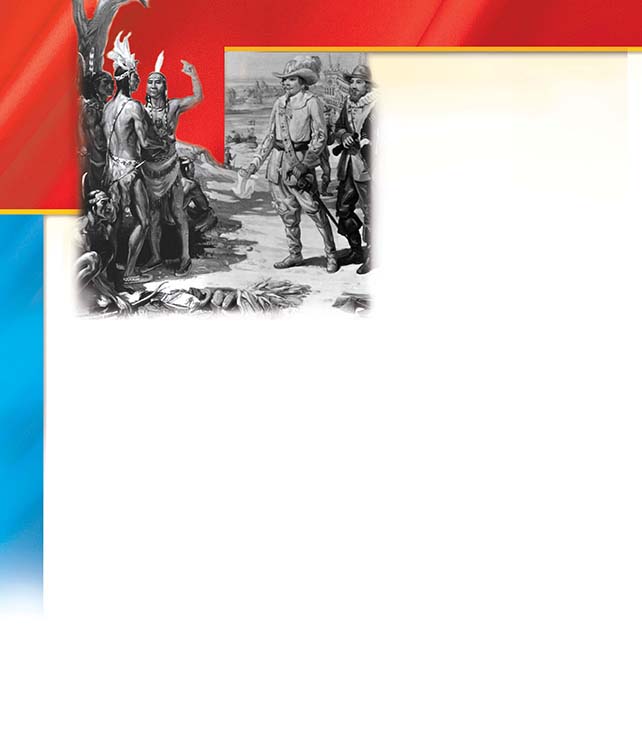SECTION 4: First Encounters

WITNESS HISTORY  AUDIO
AUDIO
The First Meeting
The arrival of Europeans in the Americas dramatically affected the native peoples who had lived there for centuries. The consequences included the rapid spread of devastating diseases among the Indian population. These not only claimed lives but also demoralized the survivors. One eyewitness described an epidemic of smallpox in Mexico:
“[The victims] could no longer walk about, but lay in their dwellings and sleeping places…. The pustules [fluid-filled sores] that covered people cause great desolation; very many people died of them, and many just starved to death; starvation reigned, and no one took care of the others any longer.”
—Bernardino de Sahagún, General History of the Things of New Spain, c. 1575–1580
Objectives
- Identify the goals of Christopher Columbus.
- Explain the consequences of his journey to the Americas.
- Analyze the effects of European contact with the people of the Americas.
Terms and People
- Bartolomeu Dias
- Vasco da Gama
- Christopher Columbus
- John Cabot
- Pedro Alvarez Cabral
- Amerigo Vespucci
- Ferdinand Magellan
- conquistador
- Hernán Cortés
- Moctezuma
- Columbian Exchange
NoteTaking
Reading Skill: Understand Effects As you read, complete the chart below with the effects of the arrival of the Europeans in the Americas.

Why It Matters With financial backing from Spain’s monarchs, Isabella and Ferdinand, Christopher Columbus found the Americas. He then returned to conquer the land, exploit its wealth, and convert its people to Christianity. That process changed the Americas, Europe, and Africa. Section Focus Question: How did European exploration affect the Americas?
Spain Looks to the West
Throughout the 1400s, the Portuguese continued to sail farther and farther from home. They sought a route around Africa’s southern tip into the Indian Ocean. Then, their ships could continue east in search of India, the East Indies, and eventually China. In 1487, the Portuguese mariner Bartolomeu Dias learned how to use the counterclockwise winds of the South Atlantic to get around southern Africa. In 1498, Vasco da Gama exploited that discovery to reach India, opening an immensely profitable trade. The Portuguese dominated the trade routes south and east around Africa.
By default, in the late 1400s the Spanish looked westward into the open Atlantic. They took inspiration from the profitable discovery and exploitation earlier in the century of islands in the Atlantic—the Azores, Madeiras, and Canaries. Perhaps, they thought, similar islands could be found farther to the west. Furthermore, by leaping from one set of islands to another, perhaps mariners could one day reach the coveted coast of China.




